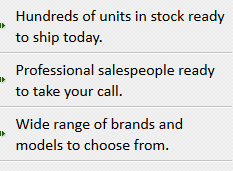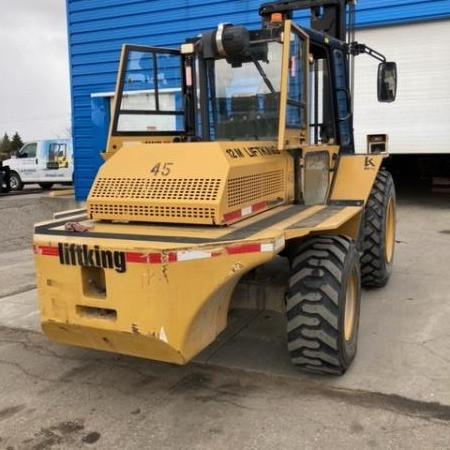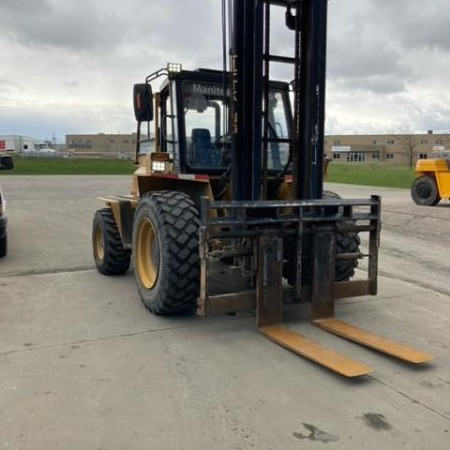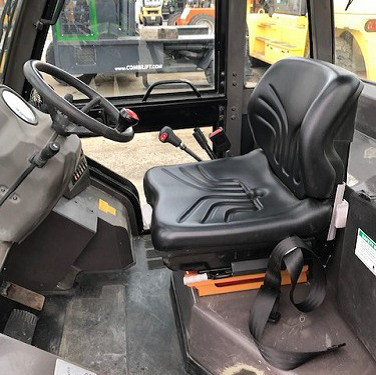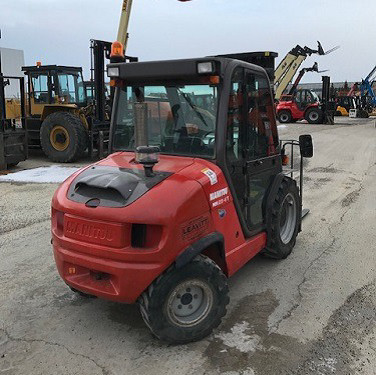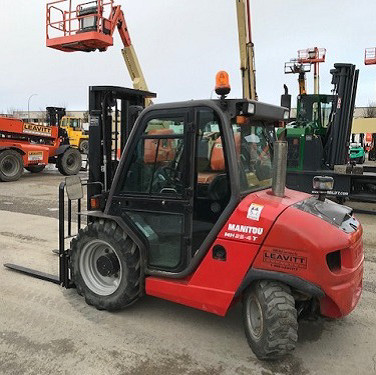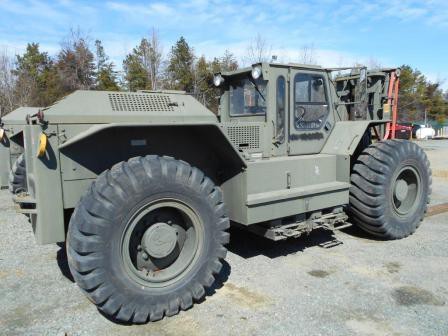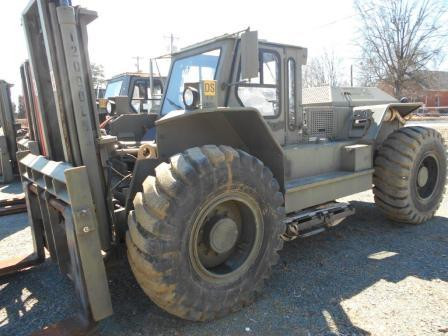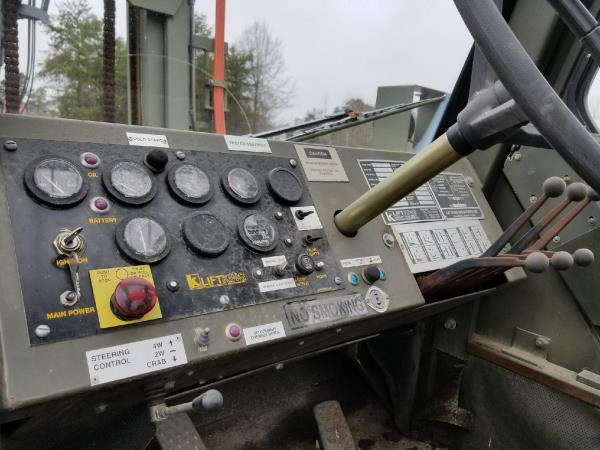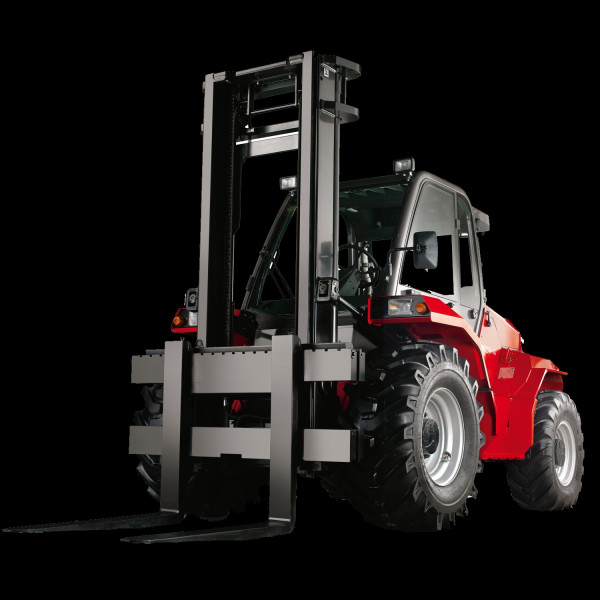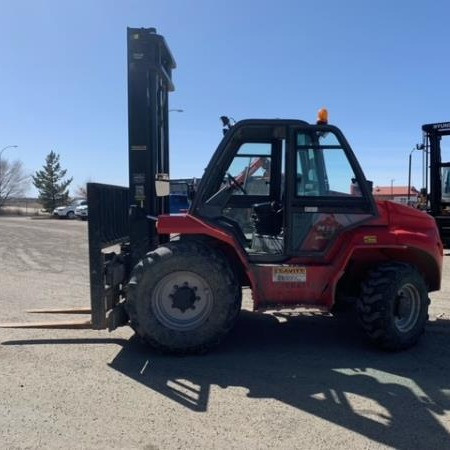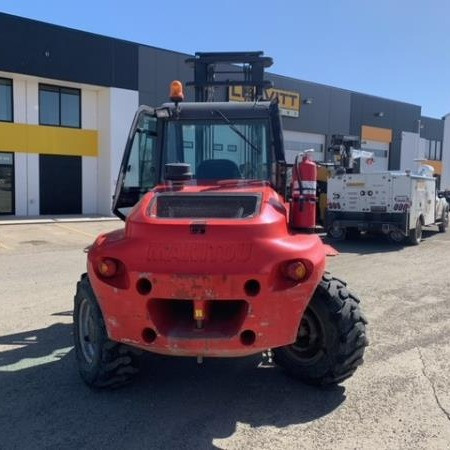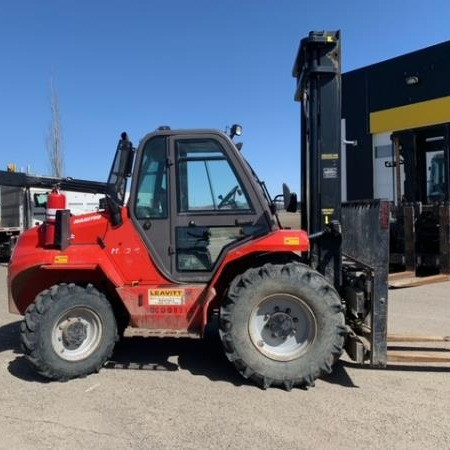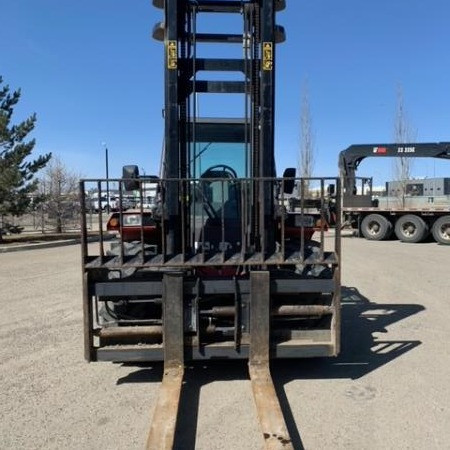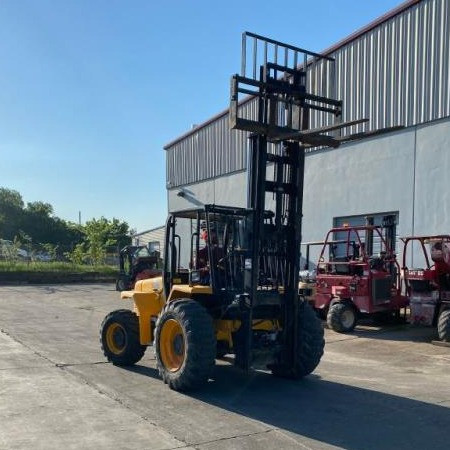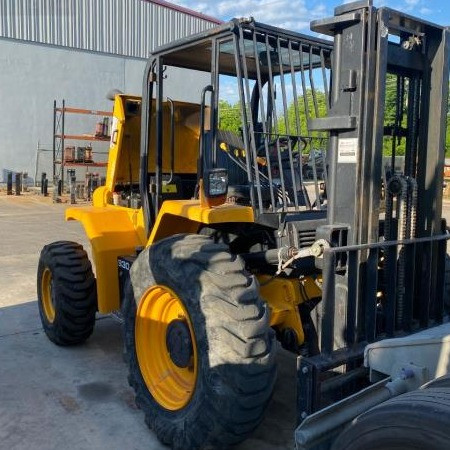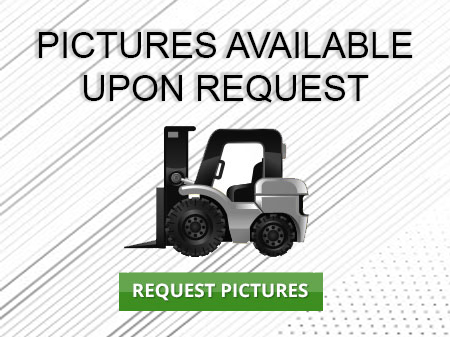Rough Terrain Forklift West Virginia
Used Rough Terrain Forklift West Virginia - Forklifts rely on two forks to unload, load and transport items. The two main categories of forklifts are industrial forklift and rough terrain forklift.
Ideal for working on surfaces that are level and smooth, industrial forklifts are mostly utilized for warehouse applications and loading dock situations. By contrast, the second category of forklifts, rough terrain forklifts, are commonly used to run on uneven and rocky surfaces. Commonly found at exterior construction sites, rough terrain forklifts have the tires, size and weight capacity to handle heavy loads. The main difference between rough terrain and industrial forklifts is the cushion tires that are on industrial forklift models. Pneumatic tires are utilized by rough terrain models. They are similar to tractor tires that offer more traction and flotation. Industrial forklifts can be powered by internal combustion engines but are more frequently powered by an electrical source, such as battery or fuel cell whereas rough terrain forklifts are almost always powered by an internal combustion engine.
Types of Class 7 Rough Terrain Forklift Trucks
There are three main kinds of Class 7 Rough Terrain Forklift Trucks. The rotating telehandler forklift, straight mast forklifts and rotating forklifts are in this category.
Regardless of its type, all rough terrain forklift trucks are designed to handle, as their name suggests, natural rough terrain and disturbed rough terrain typical of construction and military sites. Rough terrain forklift units have better performance and maneuvering options. In the case of rough terrain forklift operations, extra consideration must be given while raising loads in these rough, variable conditions to prevent tip-over. As with all forklift operation, the machine must be in a position to remain stable before lifting, transporting or lowering a load. Stability of ground and knowledge of proper lifting technique is essential for safe operation of rough terrain forklifts.
Straight Mast Forklifts
Straight mast forklifts are designed to transport building materials around a range of rough terrain sites such as demolition and construction sites. These forklift trucks provide increased maneuverability and accessibility because it is fitted with big, heavy-duty pneumatic cushion tires. Pneumatic tires allow the machine to successfully traverse difficult terrain. The majority of straight mast forklifts come in both two wheel and four wheel drive capabilities. Even though these machines are better utilized in exterior locations, many straight mast forklifts operate with propane or diesel, enabling them to be used indoors for short timeframes. Straight mast forklifts have a similar lift capacity compared to standard forklift models; ranging from 5K to 36K lbs.
Telehandler or Telescopic Handler Forklifts
The distinct telescoping boom on telehandlers and telescopic handler forklifts contribute to the unit’s name. Telescoping booms are handy for allowing the machine to load and place items at different lift heights and distances in front of the forklift. Better reachability delivers greater flexibility to the forklift operator while placing loads.
Featuring two wheels found at the front and two wheels at the rear, the standard telehandler is a long and low machine. Mounted at the back of the forklift, the telescopic boom is on a pivot that is located many feet above the forklift frame. The fuel tank and hydraulic fluid tank are found opposite to the forklifts’ cab that is typically mounted on the left side. Along the center of the machine, the engine and transmission can be found inside the frame. This common configuration allows for a balanced forklift which is necessary for the basic stability of the machine which lifting, transporting and lowering loads.
Telehandler forklifts provide much greater lift heights when compared to a standard forklift. Otherwise known as high-reach telehandlers or compact telehandlers, these models perform. Compact telehandlers can extend their full load capacity from eight-teen feet and the high-reach models to fifty-six feet. The load capacities of these machines range from five thousand pounds to twelve thousand pounds.
All-wheel steering is popular for all-terrain forklifts and provides increased maneuverability. This, along with power shift transmission and other steering features, means that the operator can move the lift in as close proximity to the work area as possible.
The latest telehandler models feature ergonomic upgrades for ultimate operator comfort. Operator comfort is enhanced via larger cabs and tilted steering. Increasingly, these types of ergonomic features are in demand at worksites as they have been shown to improve productivity by decreasing operator repetitive stress injuries and operator fatigue.
The majority of telehandler forklifts are operated by a single joystick. The joystick controls all the forklift’s boom functions as well as the hydraulic system which allows for straightforward and efficient operation.
Telehandler forklifts can also be equipped with non-marking tires which allow them to be used in other applications such as the installation of signs and billboards as well as maintenance on buildings and stadiums.
Rotating Telehandler or Roto Telescopic Handler Forklifts
The basic telehandler forklift has much in common with rotating telehandlers and roto telescopic handler forklifts. The rotating telehandler can lift excessive loads to extreme heights safely and efficiently. This unit’s added turntable and rotation flexibility increases the types of jobs it can complete. The rotating function allows the forklift to swivel a full 360 degrees around, enabling access a much larger work area without having to reposition the forklift.
Commonly, rotating telehandlers have another joystick to handle the rotation portion separately from the lift function. Power-assist steering minimized slip differential on the rear axle for additional traction and four-wheel drive are some of the extra features offered on rotating telehandlers and standard telehandler models.
With the added rotating ability of these forklifts, comes additional safety considerations. Stabilizers are a rough terrain forklift feature that rotating telehandler models rely on to increase safety while handling rotating loads that are swinging back and forth from each side of the machine. There are some rotating telehandlers that are designed to move heavy weights without stabilizers to reduce the time it takes to reposition the forklift for work in other areas of the jobsite.
The standard telehandler offers fixed cab components and rotator telehandlers are generally smaller in comparison. Therefore, rotator telehandler units can access smaller loads when compared to standard telehandler units. Ranging between four thousand and ten thousand pounds, rotating telehandlers can reach lift heights from 15 to 80 feet.
Both telehandlers and rotator telehandlers can be used as a crane when fitted with a winch attachment. These forklift attachments can save time and money by preventing a separate crane rental to be required.
Advancements for Rough Terrain Forklifts
Popular rough terrain forklift attachments include rotating fork carriages, booms, articulating booms and winches. Forklift attachments are vital for diversifying the machine. They will continue to be developed for years to come.
Most of the proposed advancements will consist of included safety features within the rough terrain forklifts. Automatic load restriction units and certain safety features have started being implemented. This system weighs a load automatically and then calculates the safe reach distance of the load while considering the extension and boom angle. An alarm sounds once the safe distance is reached, warning the operator to make load weight, reach distance or boom angle adjustments.
Rough Terrain Forklift PDF
Stock Number: 209058 GL
Make: LIFTKING
Model: LK12M42
Year: 2015
| Stock Number |
209058 GL |
| Make |
LIFTKING |
| Model |
LK12M42 |
| Year |
2015 |
| Category |
Rough Terrain Forklift |
Stock Number: DP-MAN008 GL
Make: MANITOU
Model: MH25-4T
Year: 2016
| Stock Number |
DP-MAN008 GL |
| Make |
MANITOU |
| Model |
MH25-4T |
| Year |
2016 |
| Category |
Rough Terrain Forklift |
Stock Number: 267846 GL
Make: Liftking
Model: LK12000
Year: 2003
| Stock Number |
267846 GL |
| Make |
Liftking |
| Model |
LK12000 |
| Year |
2003 |
| Category |
Rough Terrain Forklift |
Stock Number: EQC008213 GL
Make: MANITOU
Model: M50
Year: 2017
| Stock Number |
EQC008213 GL |
| Make |
MANITOU |
| Model |
M50 |
| Year |
2017 |
| Category |
Rough Terrain Forklift |
Stock Number: LS15257 GL
Make: JCB
Model: 930
Year: 2013
| Stock Number |
LS15257 GL |
| Make |
JCB |
| Model |
930 |
| Year |
2013 |
| Category |
Rough Terrain Forklift |
Stock Number: 208325 GL
Make: MANITOU
Model: M50.4
Year: 2015
| Stock Number |
208325 GL |
| Make |
MANITOU |
| Model |
M50.4 |
| Year |
2015 |
| Category |
Rough Terrain Forklift |
